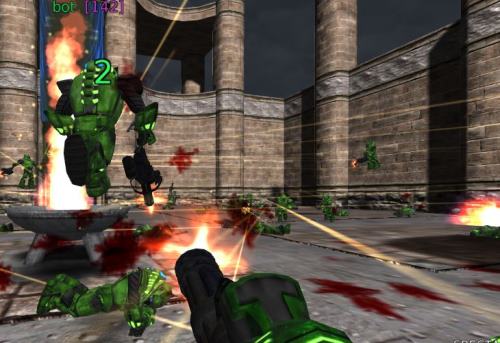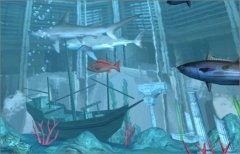WebGL, 3D in browser
 WebGL is a 3D programming standard with a browser as a platform. The final specification of the standard originated in 2010 and is determined by the Khronos Group, a consortium that is also responsible for Open GL and Open CL. It allows you to create 3D animations, interfaces or games that work both online and offline.
WebGL is a 3D programming standard with a browser as a platform. The final specification of the standard originated in 2010 and is determined by the Khronos Group, a consortium that is also responsible for Open GL and Open CL. It allows you to create 3D animations, interfaces or games that work both online and offline.

Demonstration of Unreal Turnament in the browser
OpenGL was not always unanimous. Google at first took a different approach with 03D, whose authors expressed their views on WebGL, quite critically. They later decided to supplement its code and make it a JavaScript library rather than another plugin. O3D now works as an add-on to WebGL.
Thus, WebGL is supported by Google, this is completely included in its strategy for transferring applications to the Web, and this is approaching the projects of Native Client, Google Chrome OS.
The project also supports NVidia, chipset and graphics card manufacturer, AMD, microprocessor manufacturer, Ericsson, mobile device manufacturer, Mozilla, Opera Software.
These actors join the Khronos group, which defines the specification. Microsoft joined the Khronos group in 2014.
How WegGL works
?WebGL is an interface between JavaScript and Open GL ES 2.0, a native code library that directly accesses video card hardware. There is an Open GL version for each graphics card model, which is usually installed by the operating system, whatever it is.
Rendering is done in Canvas, a graphical display surface that is part of HTML 5 and implemented by all modern browsers. WebGL can be used on other platforms if they use WebKit.
Thus, WebGL works on all browsers that support Canvas and with the JavaScript framework (see resource list).
The use will be greatly simplified using the JavaScript framework for the interface with the application. There are many of them.
- Three.js. 3D engine that wants to be easy and easy to use and works with WebGL, Canvas, SVG. The demo gallery includes an example of very realistic human skin. Demonstration and tutorial: A city consisting of a hundred lines of code.
- PhiloGL.Un JavaScript framework to facilitate the creation of a WebGL application .
- 03D. Framework from Google .
- Babylon.js. 3D game engine in JavaScript. Several demonstrations on the site. Enables the Blender Model Import (FBX) tool. Supported by Microsoft.
- Mandrel. Converts OpenGL games to WebGL.
The demonstration of Quake II, rotating in a browser with HTML 5 support, was made by Google. It uses the Java version of Quake II, Google Web Toolkit and WebGL. Many other demos were posted online.

- Quake II in a browser with HTML 5.
Classic game. QuakeGL is a study of Quake 2 code. - A video showing WebGL usage by the Webkit library.
Displayed in Canvas. - Aquarium.
Has from 1 to 1000 fish, without loss of smoothness ! - Realistic water
Click to create waves or move sphere... - Body Browser.
Human body in 3D. This strange creature has female and male attributes! - Fortress Team 2.
A source game plan is offered. Only the scenery is present, the rendering is raging because of the recording, but what it shows has a different level than Angry Birds, which is more like the first games on Apple II.
Do you want to learn WebGL? Free book in English: WebGL Insights.
WebGL on which browsers
?WebGL works with OpenGL on most computers.
Along with ANGLE (Almost Native Graphics Layer Engine), an almost native graphics-level engine, an interface produced by Google, it also works with the 3D Directory, which is part of DirectX and allows WebGL to be used over DirectX. For Windows configurations without the OpenGL module.
ANGLE will also allow mobile app developers to go through the development phase for Windows.
Microsoft did not want to support WebGL because direct access to the system library would create a security flaw. However, what Silverlight 5 does (via XNA, which it partially includes), its competing proprietary system, and what any compiled JavaScript code does.